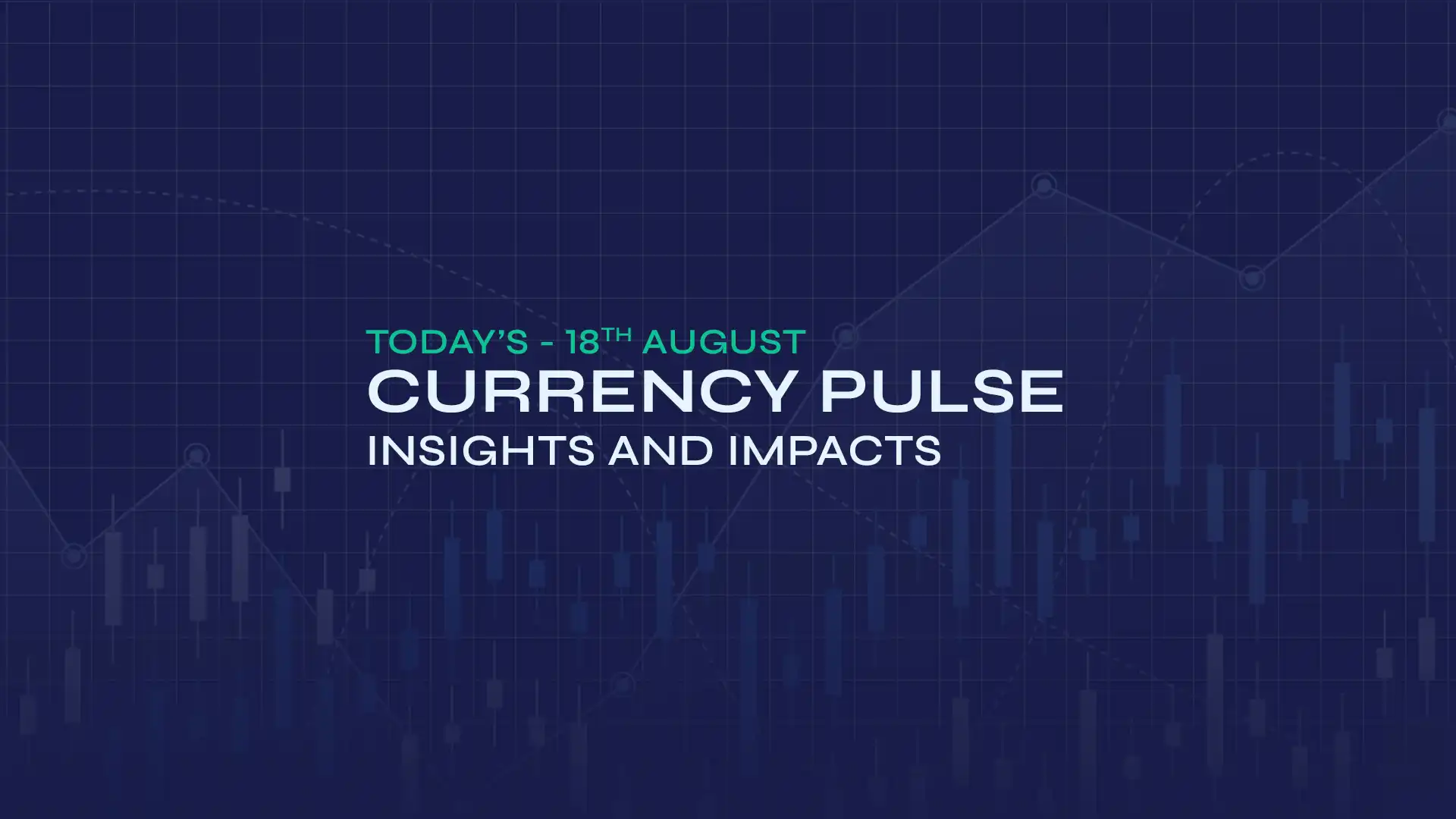GBP/USD struggled near 1.3607, amid uncertainty surrounding trade discussions between the United States (US) and its trading partners. On Wednesday, US President Donald Trump issued a new batch of tariff demand letters, raising fears of a potential global trade war. This latest surge of letters and tariff threats represents a new development in his rapidly evolving trade strategy, which has contributed to market volatility. On Tuesday, Trump stated that he plans to impose a 50% tariff on imported copper and hinted at even more severe sector-specific tariffs. Additionally, he mentioned that he will soon implement tariffs of "a very, very high rate, like 200%," on pharmaceutical imports. Recent minutes from the Federal Open Market Committee (FOMC) of the 17–18 June Federal Reserve (Fed) policy meeting, published on Wednesday, indicated that most members have advocated for maintaining interest rates, given the uncertainty surrounding tariff policy. Policymakers supported potential interest rate reductions later this year if tariff-driven inflation remains "modest and temporary". The minutes also revealed that two policymakers argued in favour of interest rate cuts in the July policy meeting. These appear to be Fed Governors Christopher Waller and Michelle Bowman, who expressed the need to unwind monetary policy restrictiveness amid increasing labour market risks.
On the sterling front, the pound gains ground as the Bank of England (BoE) highlights multiple risks to the UK economy in its mid-year Financial Policy Committee (FPC) report released Wednesday. "The risk of sharp declines in risky asset prices, sudden shifts in asset allocation, and a prolonged disruption of historical correlations remains high," the FPC stated. The committee cited "geopolitical tensions, global fragmentation of trade and financial markets, and pressures on sovereign debt" as key factors increasing economic risks. Despite these external threats, the FPC indicated that UK banks are well-capitalised and capable of supporting the real economy even under adverse conditions. Last week, concerns around UK sovereign debt rose after Chancellor Rachel Reeves announced a significant increase in Universal Credit (UC), raising doubts about the government's credibility given its pledge to cut fiscal spending. Meanwhile, investors await the UK's May GDP and factory output data, scheduled for release on Friday. The UK GDP is forecasted to grow by 0.1%, following a 0.3% decline in April.
In the upcoming sessions, optimism about the UK–US deal, the UK's monthly Gross Domestic Product (GDP), factory data, and influential FOMC member speeches will influence the GBP/USD exchange rate.
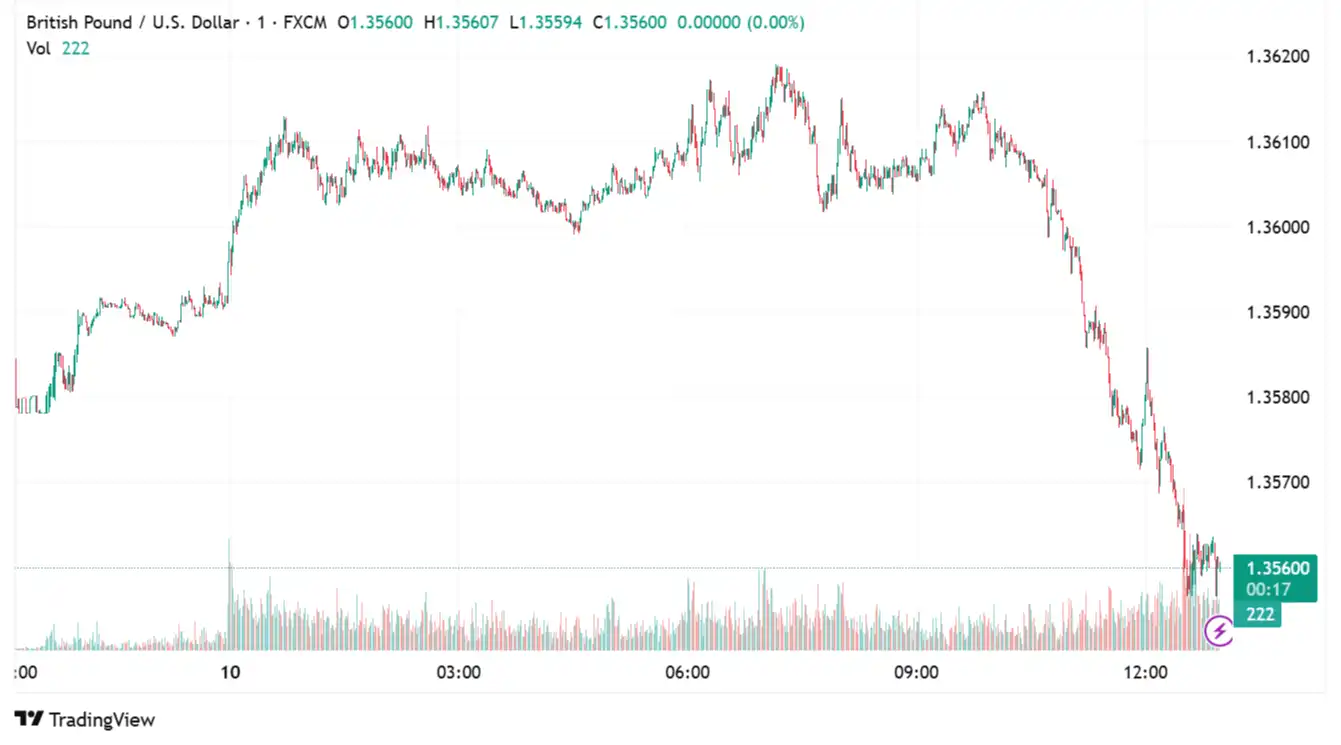
AUD/JPY Gains Amid Tariff Headlines
The AUD/JPY rose to 95.89 amid cautious market sentiment, driven by increasing concerns over Japan's economy due to ongoing trade tensions. Although the latest Producer Price Index (PPI) indicated easing inflationary pressures, it did little to change expectations that the Bank of Japan will delay any interest rate hikes. Japan's Producer Price Index (PPI) fell by 0.2% month-on-month in June, marking the second consecutive month of decline, after a downwardly revised 0.1% decrease in May. Meanwhile, the annual PPI increased by 2.9% in June, slowing from a revised 3.3% growth (previously 3.2%). These figures aligned with market expectations and represented the lowest producer inflation since August 2024. Additionally, data released earlier this week indicated that the growth in Japan's nominal wages slowed for the third consecutive month in May 2025, with inflation-adjusted real wages experiencing the steepest decline in 20 months.
Japan's top trade negotiator, Ryosei Akazawa, said on Thursday that the US dollar's (USD) status as a global reserve currency remains robust. Akazawa added that Japan is unlikely to face US demands to support the Japanese yen, as the USD is more prone to selling. Furthermore, recent media polls raised doubts about whether the ruling coalition of the Liberal Democratic Party (LDP) and Komeito will be able to secure enough seats to maintain their majority at the House of Councillors election on 20 July, adding uncertainty and potentially capping the JPY.
On the Aussie front, the Reserve Bank of Australia (RBA) decision to maintain the Official Cash Rate (OCR) at 3.85% continues to strengthen the AUD. RBA Governor Michele Bullock indicated that inflation risks remain due to high unit labour costs and low productivity, which could cause inflation to surpass predictions. Additionally, RBA Deputy Governor Andrew Hauser noted the global economy faces uncertainty, emphasising that tariff impacts are significant and likely to slow growth. China's Consumer Price Index (CPI) increased by 0.1% year-over-year in June, reversing a 0.1% decline in May, with market expectations at 0%. The monthly CPI, however, fell by 0.1%, below the expected 0%. Furthermore, the Producer Price Index (PPI) dropped 3.6% YoY in June, slightly worse than May's 3.3% decline and below the market consensus of 3.2%. Any fluctuations in the Chinese economy could influence the AUD, given the close trading relationship between China and Australia.
In upcoming sessions, escalating trade tensions and Trump's comments could hinder the AUD/JPY exchange rate.
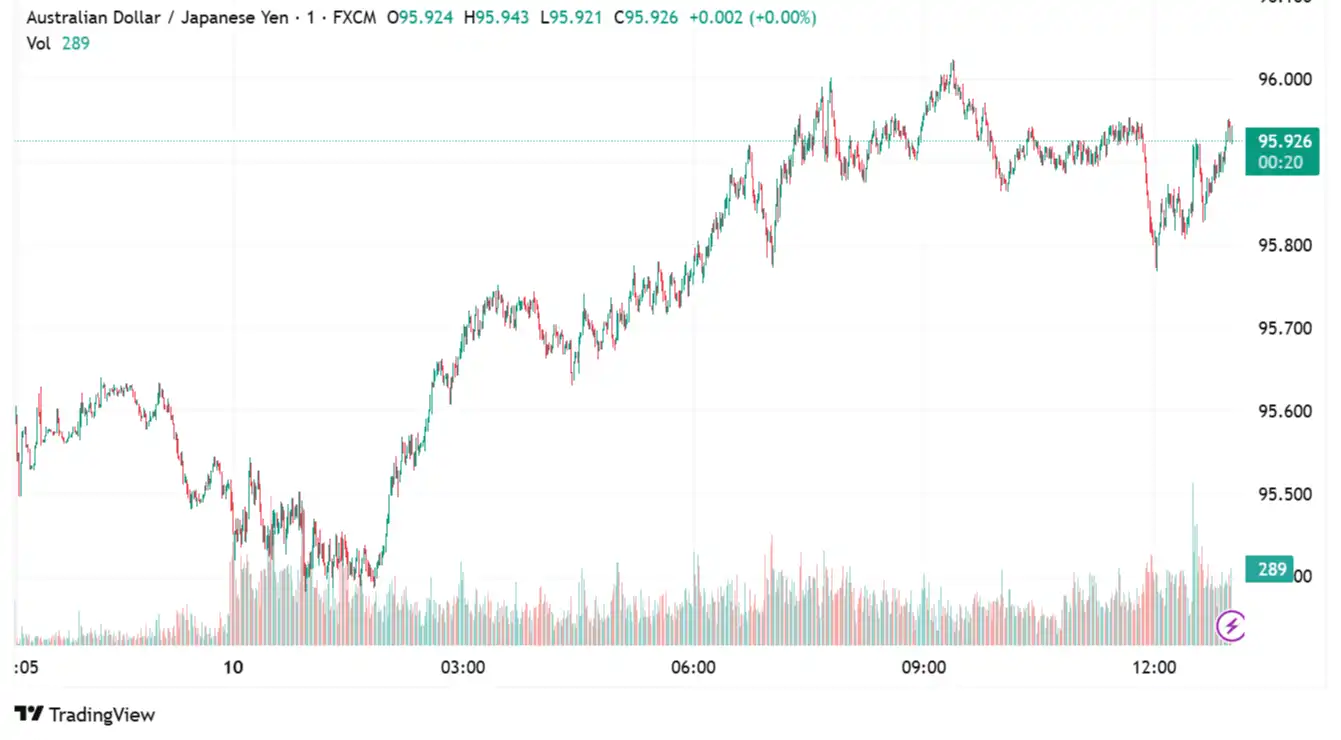
EUR/CHF Rebounds Amid EU Facing Higher Tariffs
EUR/CHF edged higher near 0.9325 after fresh comments from European Central Bank (ECB) officials, which contributed to the cautious mood around the euro. Recent comments from ECB Chief Economist Philip Lane have highlighted a rising set of global risks that extend beyond tariffs, including non-tariff trade barriers, restrictions on capital flows, and the growing intersection of security and economic policy. At the same time, ECB Deputy Director-General Livio Stracca issued a warning that climate-related shocks could reduce eurozone GDP by as much as 5% over the next five years, a decline comparable to the impact of the COVID-19 crisis. Additionally, European Central Bank policymaker Francois Villeroy de Galhau discussed the French economy on Thursday, predicting a 0.6% growth in French GDP this year. On Wednesday, EU Trade Commissioner Maros Sefcovic announced that significant progress has been made towards a framework trade agreement with the US, indicating that a deal could be possible "potentially even in the coming days." He noted that the extended deadline provides extra time to wrap up negotiations. Nonetheless, Italian Economy Minister Giancarlo Giorgetti cautioned that the talks remain "very complicated" and may extend to the last moment. Meanwhile, negotiations between the EU and the US are advancing, although it appears the EU will face higher tariffs than the UK. The EU has agreed to sign a temporary "framework" that will impose a 10% tariff on EU goods while negotiations continue.
On the other hand, improved risk sentiment as investors digested an unexpected turn in Trump's trade saga, but risk appetite remains subdued, given the highly uncertain outlook for global trade, continues to fluctuate the CHF. Recently, the International Monetary Fund (IMF) and the Swiss government have both cut Switzerland's economic growth forecasts for 2025, citing concerns about global trade tensions. The IMF now forecasts the Swiss economy to expand by just 1.3% next year, down from its earlier estimate of 1.7%.
Broader market sentiment around the ongoing trade conflict and comments from European Central Bank (ECB) officials will drive the EUR/CHF exchange rate.
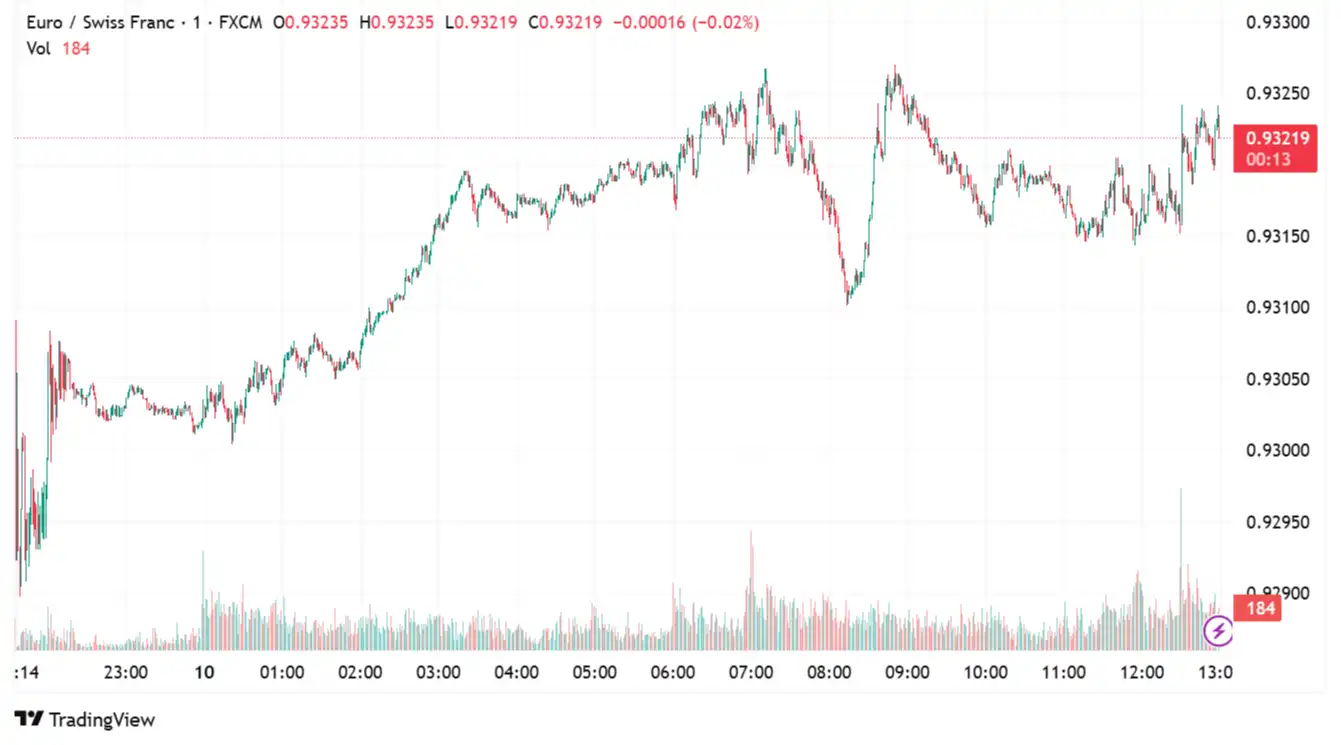
EUR/USD Wobbles Due to Uncertainty Over Fed Rates, Tariff Concerns
EUR/USD fell to near 1.1729, as the greenback softens following the latest Federal Open Market Committee (FOMC) Meeting Minutes and developments on US tariffs. The Federal Open Market Committee (FOMC) minutes from the 17–18 June Federal Reserve (Fed) policy meeting, published on Wednesday, indicated that most members favoured maintaining interest rates amidst uncertainty surrounding tariff policies. Policymakers supported potential interest rate reductions later this year if tariff-driven inflation remains "modest and temporary". The minutes also revealed that two policymakers advocated for interest rate cuts at the July policy meeting. These two appear to be Fed Governors Christopher Waller and Michelle Bowman, who supported easing monetary policy restrictions amid increasing risks in the labour market. US President Donald Trump intensified his tariff campaign on Wednesday by posting new letters on his social media platform, Truth Social, targeting six additional countries: Algeria, Iraq, Libya, Brunei, Moldova, and the Philippines, with new import duties ranging from 20% to 30%. The new tariffs, set to come into effect on 1 August, follow just two days after Trump issued similar notices to 14 other nations. This latest step highlights Trump's assertive push for what he calls "reciprocal tariffs," intended to address what he describes as unfair trade practices. The swift expansion of tariff threats is keeping global markets on edge, with investors closely monitoring how the targeted countries respond and whether any breakthrough trade agreements emerge before the August deadline.
On Tuesday, Trump indicated that a letter specifying the new US tariff rate will likely be sent to the European Union (EU) by Thursday. He also noted that the US president described the EU's position as shifting from very tough to very friendly. These remarks came as the EU intensified efforts to prevent broad reciprocal tariffs on US exports, initially scheduled for Wednesday but now postponed to 1 August. Meanwhile, the Swedish finance minister criticised the US proposal as "very bad." Despite ongoing hopes among EU officials for a deal, the US president stated that a tariff letter will be sent to the Eurozone within the next few days. Additionally, German CPI data showed inflation remained unchanged in June compared to the previous month, with the annual rate falling to the ECB's 2% target. This data slightly negatively impacted the euro.
On the euro front, the euro appreciates amid improved market sentiment that the White House may not target the EU with additional tariffs and might secure some exceptions to the baseline rate of 10%. EU Trade Commissioner Maroš Šefčovič noted on Wednesday that significant progress has been made toward a framework trade agreement with the US, implying a deal could be reached soon, possibly even in the coming days. Šefčovič also mentioned that the extended deadline provides extra time to finalise negotiations. However, Italian Economy Minister Giancarlo Giorgetti warned that talks remain "very complicated" and could extend to the last moment. Meanwhile, EU–US negotiations are progressing, though the EU might face higher tariffs than the UK. The EU has agreed to sign a temporary "framework" imposing a 10% tariff on EU goods as negotiations continue. German CPI data confirmed inflation stalled in June compared to May, and the annual rate eased to the ECB's 2% target.
Recent remarks by ECB Chief Economist Philip Lane have pointed to an increasing array of global risks, including non-tariff trade barriers, capital flow restrictions, and the rising overlap of security and economic policies. Meanwhile, ECB Deputy Director-General Livio Stracca warned that climate shocks could cut eurozone GDP by up to 5% over the next five years, comparable to the COVID-19 crisis’s impact. Furthermore, European Central Bank policymaker Francois Villeroy de Galhau discussed the French economy on Thursday, forecasting a 0.6% increase in French GDP this year.
Broader market sentiment around the Eurozone-US trade negotiations will be a key driver for the EUR/USD exchange rate.
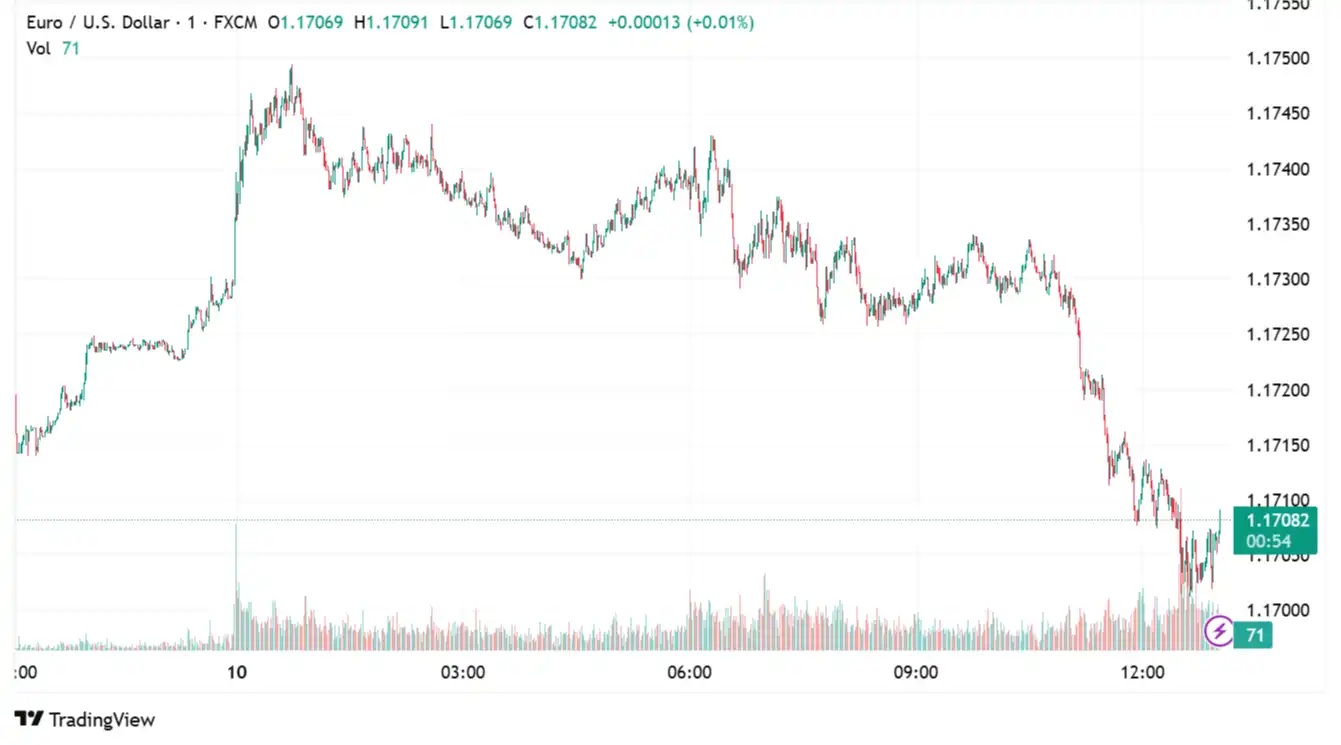
Stay Ahead in the Currency Game
Whether you're a daily FX trader or handle international transactions regularly, our 'Currency Pulse' newsletter delivers the news you need to make more informed decisions. Receive concise updates and in-depth insights directly in your LinkedIn feed.
Subscribe to 'Currency Pulse' now and never miss a beat in the currency markets!
Ready to act on today’s insights? Get a free quote or give us a call on: +44 (0)20 7740 0000 to connect with a dedicated portfolio manager for tailored support.
Important Disclaimer: This blog is for informational purposes only and should not be considered financial advice. Currency Solutions does not take into account the investment objectives, financial situation, or specific needs of any individual readers. We do not endorse or recommend any specific financial strategies, products, or services mentioned in this content. All information is provided “as is” without any representations or warranties, express or implied, regarding its accuracy, completeness, or timeliness.




